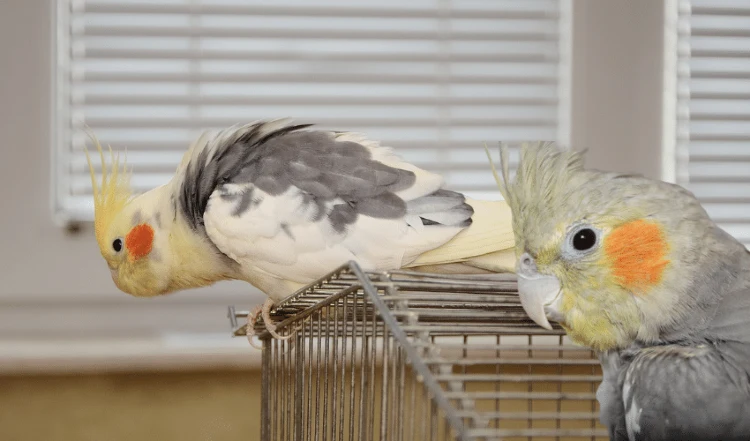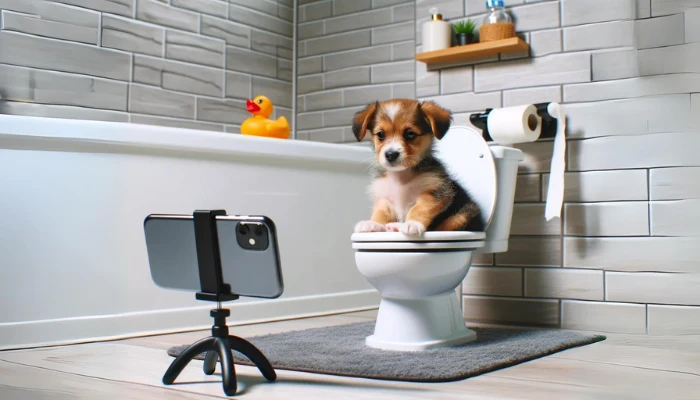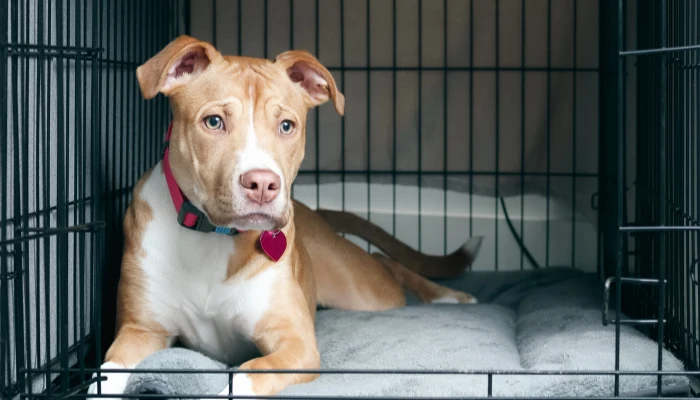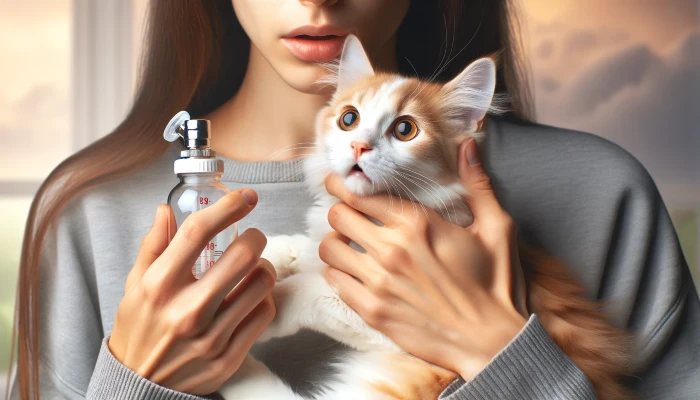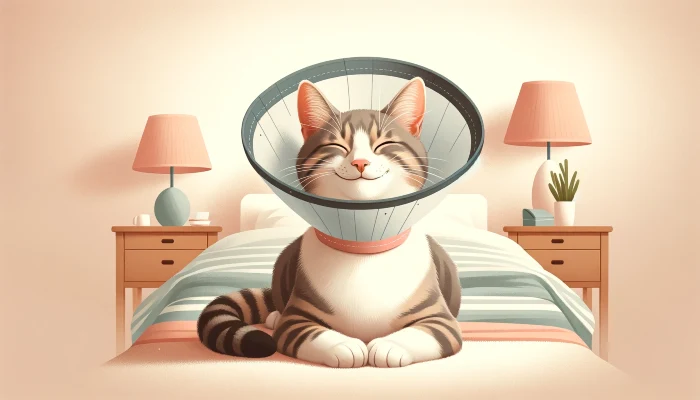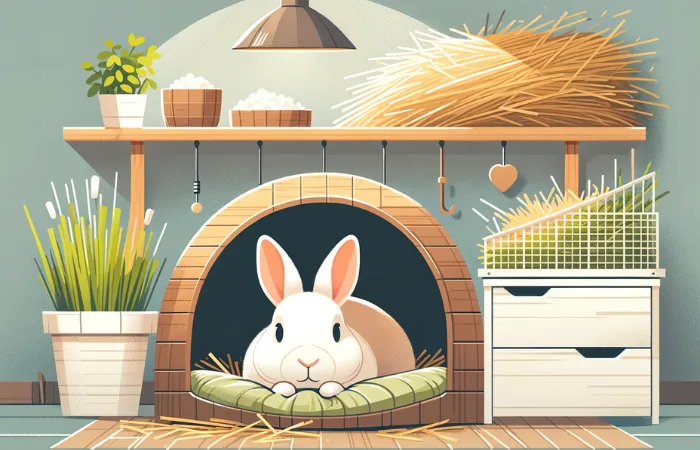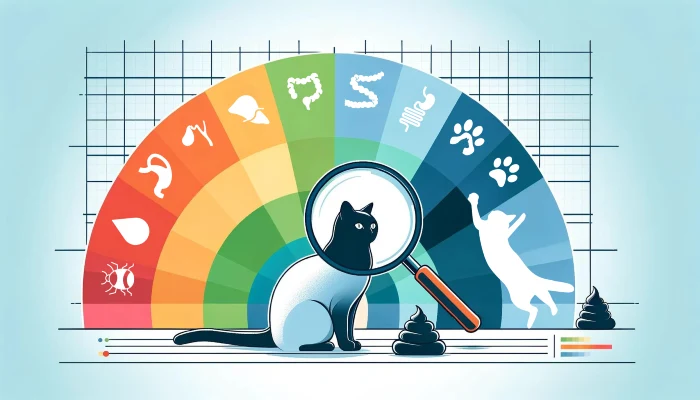Cockatiels make wonderful pets for first time bird owners. They’re active, friendly, playful, not extremely noisy and have fun personalities.
But before you bring a cockatiel into your home, there are some important things you need to know.
The first thing to consider is, whether you can afford to provide the proper enclosure for a cockatiel?
Cockatiels need plenty of space and lots of engagement. Both of which adds up. You’ll need to buy a large cage, supplies, and toys to give your cockatiel a proper home.
The second things you must consider is, whether you have the time to give your cockatiel the attention it needs to live happily?
Cockatiels require a lot of attention to thrive. They are very social birds and will need at least 1-3 hours each day out of the cage to exercise and interact with you.
Finally, the third thing is… can you make a long term commitment to owning a Cockatiel?
These birds live up to 25 years, so owning a Cockatiel is definitely a long term commitment.
If you feel that you can handle these things, then a cockatiel is a great choice for you.
Now you must obtain your cockatiel. It’s recommended that you get one from a reputable breeder in your area. The benefit here is that you’ll get a hand fed baby.
Hand fed birds are a little more expensive, but it is worth the extra cost to have a young bird that is already used to being handled.
If you choose to get a bird from a pet store, it will take a bit longer to tame and get it used to being handled.
Where Cockatiel is King: The Cage
You will need to get a cage that is at least 24 inches long by 18 inches wide by 24 inches high, and the bars should be spaced no more than 3/4 inches apart.
This is the minimum requirement. Of course, it’s always better to get your cockatiel the largest cage you can afford.
Make sure the cage is not made out of zinc, lead, wood or bamboo.
The cage should be placed in the room that you spend the most time. Cockatiels are very social and do better in an area where they can see and hear you.
Be sure that the cage is not in a drafty area or in front of windows or near open doors. You also never want to put your cage in the kitchen, this is a dangerous room for birds due to the heat, fumes and smoke.
If your cage does not have a seed guard attached, you’ll want to get a cage skirt to help keep the area around your bird’s cage clean.
Seed guards and skirts help control the amount of seed hulls and feathers that will be flung out of the cage. Don’t forget to hang a cuttlebone in your bird’s cage and replace it as needed.
The Art of the Perch
There should be at least two perches in the cage, and they should be placed at different heights.
The perches should have different circumferences (still easily grasped by your bird’s feet), which will help keep your cockatiels feet strong and healthy.
You can choose perches made out of wood, rope, and plastic.
Experts highly recommend having one perch, known as a Pedi-Perch. These store-bought perches help to keep your bird’s toenails trimmed.
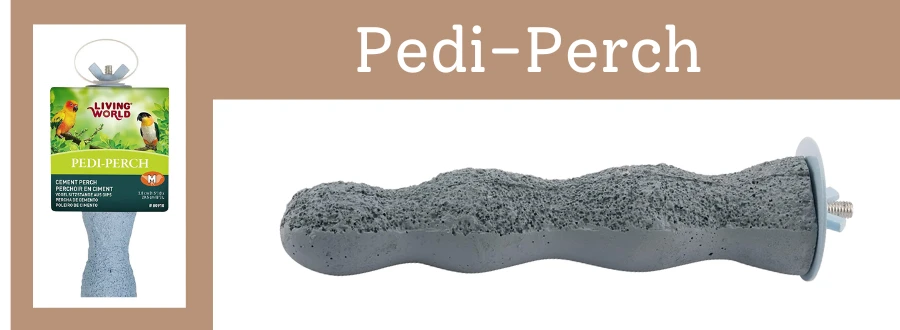
Bedding Requirements
You can use newspaper (no ads) or a recycled newspaper bedding such as Carefresh and Yesterday’s News to line your bird’s cage. They’re easy, quick and very affordable.
If you use paper, you’ll need to change the paper at least every other day.
If you use the recycled newspaper bedding, just make sure to spot clean any clumps of droppings at least every other day and completely change it once a week.
Food and Water Dishes: Power of 3
- 1 for dry food
- 1 for fresh food
- 1 for water
Toys, Toys, Toys
Unlike canaries, cockatiels are active and playful birds, and they require frequent stimulation.
Luckily, you can easily find a wide variety of toys specifically made for cockatiels in stores. And if you’re a bit crafty, you can make them yourself.
Have fun with this part of cockatiel ownership!
Try to make a fun playground in your bird’s cage by placing rope perches, ladders, swing, bird chew toys, bells and balls. You can also design a play yard for your cockatiel to exercise on outside the cage using PVC pipe (new), elbows and couplers.
Get the appropriate diameter pipe for your bird’s feet.
This is where you can create a play yard that is as big or small as you want. Have fun with this, just be sure to have a few perching levels.
After you build your play yard, use ropes (you can use Sisal or Cotton ropes) to give your bird a way to climb to the different perches and hang different toys in a variety of places for your bird to play with. It’s a good idea to make sure to have your bird’s wings clipped before allowing play time outside the cage.
Your cockatiel will also enjoy chewing on popsicle sticks, tearing up crumpled balls of plain white paper, cardboard boxes or empty toilet paper and paper towel rolls.
Keep extra toys on hand, so you can switch them out every week or two to prevent your bird from becoming bored. Plus, they get awfully excited when they discover new things in their space to play with.
Feeding: What's To Eat?
You can feed your cockatiel a cockatiel seed blend or a pelleted diet (avoid using pellets that are artificially colored or flavored).
There are benefits to feeding your bird a pelleted diet. First, they’re cleaner (no hulls) and are nutritionally complete. Unfortunately, most birds won’t readily eat pellets.
That doesn’t mean they won’t. It just means you have to train them to eat the pellets. It takes time to transition a bird from seeds to pellets, and even with time you might not be successful.
As you begin the process of transitioning your bird to pellets, pay attention because your cockatiel has a high metabolism and can quickly starve even over a short period of time.
Consider consulting your avian veterinarian for advice on the best way to transition your bird to a pelleted diet.
Variety Is Important
It’s important to feed your cockatiel a variety of fresh dark leafy green, vegetables and fruits every day. This provides them with the nutrients they need to stay healthy.
A list of safe and unsafe food for your cockatiel is provided below.
The fresh foods should be cut into small pieces that are easy for your bird to eat. It’s best to divide the amount of fresh foods you feed into at least two separate portions. Birds don’t eat a lot in one sitting, and the fresh foods should be removed within two hours to prevent spoiling.
And while your bird will love fruits, you’ll need to limit their fruit intake as they are high in natural sugar.
As for treats… consider indulging your cockatiel with some healthy, do-it-yourself homemade treats!
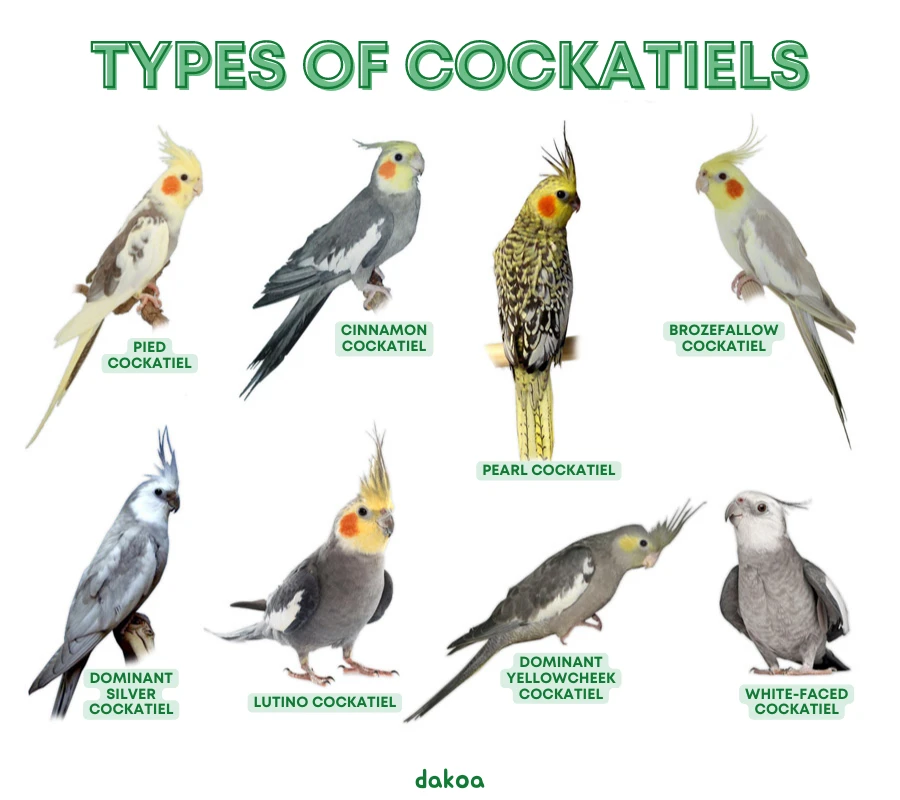
Cleaning Your Cockatiel's Cage
Keeping your cockatiels cage clean is critical to keeping him healthy.
You should change and refill the water dish at least once a day (more if soiled) and the fresh food dish should be changed and cleaned after two hours in the cage.
The dry food dish should have seed hulls removed daily and seed replenished. You’ll want to clean the dry food dish weekly, unless soiled.
The newspaper lining the cage should be changed at least every other day. If using a recycled newspaper bedding, you’ll want to spot clean any clumps of droppings at least every other day, and change it completely on a weekly basis.
The cage and toys should be cleaned weekly using a pet safe soap and rinsed well to remove all soap residue.
If your cage has a wire floor and seed guard, make sure those are thoroughly cleaned also.
Don’t forget to clean the play yard too. This should be spot cleaned daily and thoroughly cleaned weekly.
Keeping Your Cockatiel Healthy
Cockatiels can live up to 25 years. And you want to do your part to help your feathered friend live a high-quality life for as long as possible. That’s why it’s important that you watch your bird for any signs of illness and get them any needed treatment promptly.
Know what veterinarians in your area specialize (or have experience) treating birds, and keep that contact information handy.
Here are some signs of illness to watch for. If you notice any of these signs, don’t wait to seek help for your bird.
-
- Changes in behavior
- Changes in eating and drinking habits
- Changes in activity
- Sitting at the bottom of the cage
- Breathing difficulties
- Discharge from eyes or nose
- Change in consistency of droppings
- Ruffled Feathers
- Feather plucking
It’s recommended to have your cockatiels wings trimmed regularly to keep him safe from injury or escape, which will likely lead to death.
A bird allowed free flight is at danger of flying into windows, walls and ceiling fans, as well as escaping from open doors or windows.
Don’t attempt to trim your bird’s wings yourself, you need to have this done by a veterinarian.
Birds have blood feathers (newly forming feathers with a rich blood supply) in their wings, and if you cut into one of these feathers, you risk your bird dying from blood loss. Don’t risk it, it’s worth paying the fee to have a vet do it.
You should allow your bird to bathe at least 1-3 times a week. You can fill a shallow pan with tepid (not hot or cold) water and place your bird into it to splash and bathe, or you can get a new spray bottle and set it on the mist setting and mist your bird. Regular baths help keep your bird’s feathers healthy.
Some cockatiels can suffer from night fright (they will literally freak out in the dark). If your bird experiences this, just simply put a night light in the room where the bird stays, and open the cover a little to allow some light in.
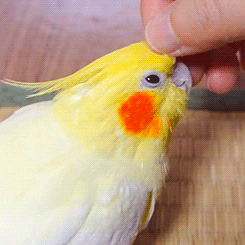
Taming and Handling Your Cockatiel
If you purchased a hand fed bird, taming and handling has pretty much already been done for you. After giving your new bird a day to get used to his new home, you should be able to easily start handling him.
The breeder may already have had the wings trimmed, but if not, you should have a vet do this as soon as possible to keep your new bird safe while he is out with you.
If you purchased a bird from a store, you will need to give your new bird at least 3 days to get used to his new home before handling him. Remember, a big change like this is very stressful, so let your cockatiel adjust slowly and don’t try and force it.
More To Discover
- Christmas Holiday Hazards for Pets and How to Protect Them
- Pet Health Issues You Shouldn’t Ignore: Prevention is Better (and Cheaper) Than a Cure
- Probiotics for Pets: Investigating The Health Benefits, The Good, The Bad And What To Look For
- A Tale of Two Pet Cultures: Contrasting Pet Ownership in Germany and the United States
There are several videos on YouTube that will help guide you through this.
Give your new cockatiel lots of love, attention and proper care, and you will have an extremely enjoyable companion for many years.
List of Supplies for Your New Cockatiel
-
- Cage (min 24x18x24) space between bars nor more than 3/4 inches apart. Bigger the cage the better
- Perches (at least 2)
- Food and Water Dishes (3)
- Bedding (Carefresh or Yesterday’s News or newspaper)
- Cuttlebone
- Premium quality Cockatiel food
- Toys (a lot of them)
- Cage skirt (unless the cage has a seed guard)
- Cage cover (you can use a sheet or towel)
Safe Foods Your Cockatiel Will Love
-
- Asparagus
- Broccoli
- Bok Choy
- Carrots and Carrot tops
- Celery
- Corn(not canned)
- Zucchini
- Yellow squash
- Chard
- Parsely
- Green Beans
- Yellow wax beans
- Peas
- Sweet Potato
- Kale
- Tomatoes (no stems or leaves)
- Red and Green peppers
- Dark leafy greens
- Pumpkin
- Sprouts (fresh)
- Berries
- Apples (no seeds)
- Peaches and Apricots (no pits)
- Bananas
- Melons
- Kiwi
- Mango
- Papaya
- Pears (no seeds)
- Scrambled (plain) and hard-boiled eggs (crushed with shell)
- Cooked beans (not canned)
- Cooked whole wheat pasta
- Cooked oatmeal, barley or brown rice
Unsafe Foods You Must Avoid
-
- Avocado
- Rhubarb
- Alcohol
- Coffee or Tea
- Caffeinated beverages
- Chocolate
- Leaves and stems from tomatoes, eggplants or potatoes
- Onions
- Garlic
- Fruit pit and most seeds from fruits
- Sugary, salty or fatty foods
- Tobacco
- Raw Peanuts








